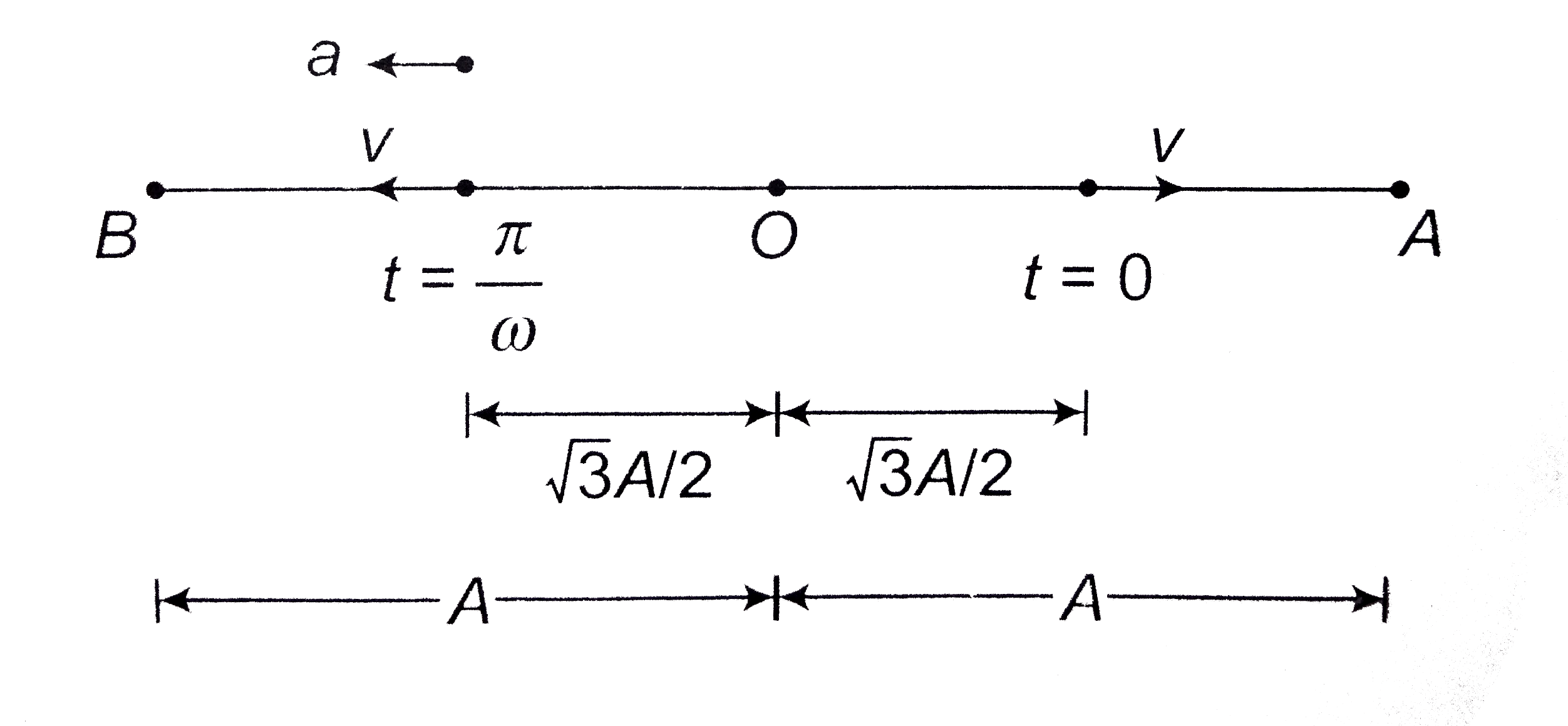A particle executes SHMx=Asin(ωt+ϕ). At t=0, the position of the particle is x=√3A2 and it moves along the positive x-direction. Find
(a) phase constant ϕ
(b) velocity at t=πω
(c) acceleration at t=πω
x=Asin(ωt+ϕ)
At t=0,x=√3A2
√3A2=Asin(ω×0+ϕ)⇒sinϕ=√32
=sin60∘ or 120∘
ϕ=60∘ or 120∘
v=dxdt=Aωcos(ωt+ϕ)
At t=0,v=Aωcosϕ
cos60∘=12 and cos120∘=−12
As v is +ve at t=0, ϕ=60∘=π3
(b) Now x=Asin(ωt+π/3)
v=Aωcos(ωt+π/3)
At t=π/ω, x=Asin(ω⋅π/ω+π/3)
=−Asinπ3=−√3A2
v=Aωcos(ω⋅π3+π3)=−Aωcosπ/3=−Aω2
(c) a=−ω2x
At t=πω,x=−√3A2
a=−ω2(−√3A2)=√3ω2A2

Topper's Solved these Questions
Similar Questions
A particle executes simple harmonic motion of amplitude A along the x - axis. At t=0, the position of the particle is x=A2 and it moves along the positive x - direction. Find the phase contant δ, if of the equation is written as x=Asin(ωt+δ).
View SolutionA particle executes simple harmonic motion of mplitude A along the X-axis. At t=0 the position of the particle is x=A2 and it moves along the positive x-direction. Find the phase constante δ if the equation is written as x=Asin(ωt+δ)
View Solution
Knowledge Check
The displacement-time equation of a particle executing SHM is A−Asin(ωt+ϕ). At tme t=0 position of the particle is x=A2 and it is moving along negative x-direction. Then the angle ϕ can be
Aπ6Bπ3C2π3D5π6The displecemen-time equation of a particle execitting SHM is x=Asin(ωt+ϕ) At time t=0 position of are position is x=A/2 and it is moving along negative x−direction .Then the angle ϕ can be
A[1k1+1k2]1B(4t−π6)C12π(k1+k2M)1/2D12π(k1−k2M)1/2A particle is executing SHM, whose equation is given below
x=Acos(ωt+ϕ). If t=0 , particle is mean position going towards positive x-direction then ϕ is equal toA0Bπ/2CπDnoone of the above
The coordinates of a particle moving in x-y plane at any time t are (2t,t2). Find (a) the trajectory of the particle, (b) velocity of particle at time t and (c) acceleration of particle at any time t.
View Solutionx−t equation of a particle executing SHM is
x=Acos(ωt−45∘)
Find the point from where particle starts its journey and the direction of its initial velocity.
View SolutionAcceleration of a particle in x-y plane varies with time as a=(2tˆi+3t2ˆj)m/s2 At time t=0, velocity of particle is 2m/s along positive x direction and particle starts from origin. Find velocity and coordinates of particle at t=1s.
View SolutionA particle located at position x=0, at time t=0, starts moving along the positive x-direction with a velocity v2=αx (where alpha is a positive constant). The displacement of particle is proportional to
View SolutionA xandy co-ordinates of a particle are x=Asin(ωt)andy=Asin(ωt+π/2). Then, the motion of the particle is

View Solution
